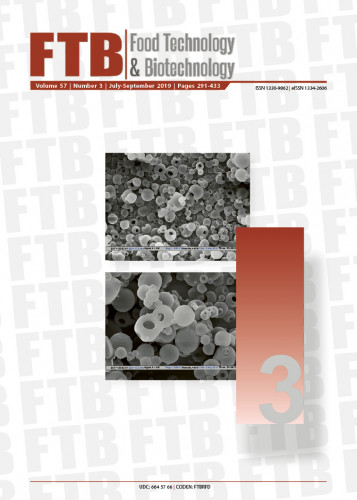In this study, the influence of meat batter composition and sausage diameter on the development of microbiota and sensory traits of traditional, spontaneously fermented wild boar meat sausages are evaluated. This research also demonstrates how principal component analysis (PCA) can be used to relate product sensory properties to particular microbial genotype and to select potential starter or adjunct culture. Generally, similar microbiological results were obtained in all types of products. The undesirable microbiota was either not detected at any sausage production stage or its number decreased below the detection limit in ripened sausages. The low growth rate of lactic acid bacteria (LAB) was consistent with the obtained pH and slow acidification rate. Although no differences in the composition of LAB species were noticed between sausage types (50S=50 % wild boar meat in small casing, 50L=50 % wild boar meat in large casing, 100S=100 % wild boar meat in small casing), a clear separation based on LAB genotypes could be observed. Upon quantitative descriptive analysis, significant differences in sensory attributes between sausage types were established. According to the PCA, the overall acceptability traits of sausages are closely linked to one Leuconostoc mesenteroides genotype (LM_4). Of all tested technological properties, LM_4 strains showed remarkable acidification ability, lowering the pH from pH=5.41 to 3.74, and pronounced proteolytic activity on skimmed milk as well as antagonistic activity against Staphylococcus aureus (DSM 20231) and Brochothrix thermosphacta (LMG 17208). Lipolytic and haemolytic activities were not detected, and all analyzed strains were susceptible to tested antibiotics and possessed no biogenic amine genes.; U ovom radu istražen je utjecaj sastava mesnog nadjeva i promjera kobasica na razvoj mikrobiote i senzornih osobina tradicijskih, spontano fermentiranih kobasica od mesa divlje svinje. Ovo istraživanje pokazuje kako se analizom glavnih komponenata mogu povezati senzorna svojstva proizvoda s određenim sojem bakterija, te za selekciju potencijalnih starter kultura. Općenito govoreći, nakon mikrobioloških analiza svih vrsta proizvedenih kobasica dobiveni su slični rezultati. Niti u jednoj fazi proizvodnje kobasica nije detektirana neželjena mikrobiota ili je njezin broj u zrelim kobasicama bio ispod granice detekcije. Niska stopa rasta bakterija mliječne kiseline bila je u skladu s dobivenim pH-vrijednostima i sporom stopom zakiseljavanja. Iako nisu uočene razlike u sastavu vrsta bakterija mliječne kiseline između različitih tipova kobasica (50S=50 % mesa divlje svinje u tankom ovitku, 50L=50 % mesa divlje svinje u debelom ovitku, 100S= 100 % mesa divlje svinje u tankom ovitku), moglo se opaziti jasno odvajanje na osnovi genotipova pojedinih bakterija. Kvantitativnom opisnom analizom utvrđene su bitne razlike u senzornim značajkama različitih vrsta kobasica.
Sažetak
![The influence of meat batter composition and sausage diameter on microbiota and sensory traits of artisanal wild boar meat sausages / Ivica Kos, Ana Zgomba Maksimović, Marija ZunabovićPichler, Sigrid Mayrhofer, Konrad J. [Johann] Domig, Mirna Mrkonjić Fuka.](edb6zs2a/repd/g/11/mvu/g11mvu7jal1g.jpg)
 Food technology and biotechnology : journal of the Faculty of Food Technology and Biotechnology, University of Zagreb, Zagreb, Croatia : 57,3(2019) / editor-in-chief Vladimir Mrša.
Food technology and biotechnology : journal of the Faculty of Food Technology and Biotechnology, University of Zagreb, Zagreb, Croatia : 57,3(2019) / editor-in-chief Vladimir Mrša.